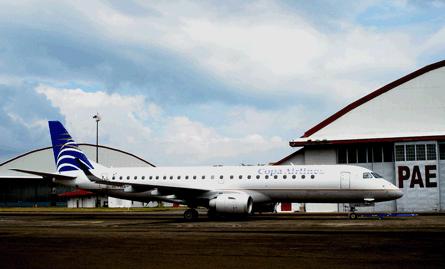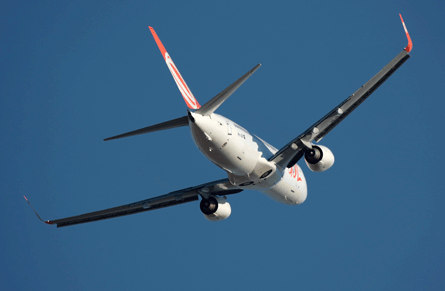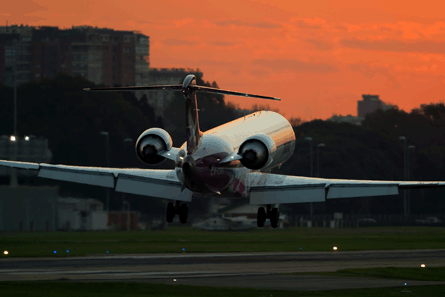South American MRO shops are increasingly turning to established firms outside the fast-growing region to help build capabilities.
Gol has forged a pioneering partnership with Delta TechOps under which the US firm is helping the Brazilian airline's MRO shop find efficiencies and secure Federal Aviation Administration Part 145 repair station certification, while Gol will use Delta to overhaul at least half of its CFM56-7 engines.
The tie-up could become a new template for Latin American carriers aiming to raise MRO standards and take advantage of relatively low labour costs to gain third-party business.
Delta TechOps is to assist Gol in identifying and implementing measures to improve maintenance yields, production and systems, material management and the maintenance induction schedule. "This is the backbone of our MRO partnership with Gol - making sure they have the right tools in place to be successful," says Delta TechOps vice-president of technical sales and marketing Jack Turnbill.
 |
|---|
© ST AerospaceST Aerospace's Panama facility can accommodate 12 narrowbodies |
He highlights "turn time improvement initiatives which we feel will provide tangible benefits to Gol" by lowering maintenance costs and increasing aircraft availability.
Citing preliminary analysis completed by Delta TechOps, Gol vice-president technical Adalberto Bogsan says he expects his carrier's Boeing 737 overhaul times will be reduced by at least 10%.
Gol's MRO centre in Belo Horizonte has six 737 maintenance lines, projected to complete 65 heavy checks and 250 light checks this year. Bogsan says each heavy check now takes 12 days and a 10% reduction would "enable us to send six more airplanes to heavy maintenance during the year".
Delta TechOps sent employees to Belo Horizonte last year to conduct initial analysis. Implementation of the project is beginning and will take 12-24 months, says Turnbill.
"We can help them with systems, knowledge transfer, how to be more efficient and more cost effective," he says. "As a large in-house MRO, we think this is a key differentiator for us. This is something that took us 80-plus years to build. We now support our own fleet of airplanes plus 150 customers around the world. But it doesn't happen overnight."
Delta TechOps has 9,600 employees spread across its MRO complex in Atlanta and 44 line stations. Gol has 600 mechanics and plans to increase this workforce by 3% by mid-year, to support its new brakes shop.
BATTERY SHOP
A new battery shop will also open in the near future and the interior shop is being expanded. Bogsan says that "looking forward" Gol may add a seventh heavy maintenance line "that we could use to serve other operators".
The airline has a limited third-party business involving work for other Brazilian 737 operators. FAA certification, however, would open the possibility of pursuing third-party work overseas and of performing exit checks on the 737s it is returning to lessors.
 |
|---|
© AirTeamImagesGol is outsourcing four lease-end 737 checks this year |
This year Gol has to outsource four 737 heavy checks to meet lease-end condition requirements, says Bogsan.
Turnbill says Gol is on course to secure FAA certification in about one year - and once it has, Delta will consider sending some of its own 737s to Belo Horizonte. "We've had those conversations," says Turnbill. "But you have to walk before you can run. The focus is to support the operation for the Gol fleet, which is growing quite rapidly."
Bogsan adds: "Part of the certification process is to have an American airline interested in using our maintenance services. Since we are experts in 737NG in South America, and Delta flies NGs from the USA to Brazil, we'd absolutely support them."
Delta TechOps has been working with Gol "since the first day of their operation" in January 2001, providing component and CFM56 overhauls, Turnbill notes.
Before the new agreement, Delta TechOps was responsible for overhauling 22% of Gol's CFM56s, says Bogsan.
Gol, which operates a fleet of over 100 737NGs, began in-sourcing heavy airframe maintenance five years ago, after it opened its Belo Horizonte facility.
"The facility itself is very modern, well laid out and efficient," says Turnbill. "The workforce is eager. They want to do a good job for Gol and grow their business. Overall, I'm quite impressed. They have the right foundation to be a world-class maintenance provider for themselves and to be able to expand that to third parties as well."
PLUNA PARTNERSHIP
Uruguayan carrier Pluna forged a similar, albeit much smaller, maintenance partnership with Canada's Jazz Air last year. Jazz, which had acquired a minority stake in Pluna, helped it open a Bombardier CRJ heavy maintenance line.
Pluna vice-president operations Martin Harrison says the carrier dispatched a small team to Canada to learn from Jazz's own CRJ heavy check facility. With the expertise gleaned from Jazz plus assistance from Bombardier, Pluna completed five C1 checks on CRJ900s in the second half of last year, with the last performed 30% quicker than the first, says Harrison.
The carrier, which operates 10 CRJ900s, has two more C1 checks to complete in the first half of this year. A maintenance gap will follow, as the other three CRJ900s in Pluna's fleet are less than one year old. But Harrison says another Pluna team has visited Canada to prepare for more extensive C2 checks that will start to come up in 2012.
Pluna has historically had a small maintenance operation in a relatively large hangar which can accommodate up to four CRJ900s at one time. It worked on its small fleet of Boeing 737s, 757s and 767s until they were phased out in 2008 as part of a restructuring that allocated CRJ900s to regional routes. The first two years of the CRJ900 operation required light checks only as the aircraft were delivered new, but when the first C1 checks were approaching last year Pluna decided to invest in its own heavy maintenance capability.
 |
|---|
© AirTeamImages.comPluna completed five C1 checks on its CRJ900 fleet in the second half of last year |
"There was no heavy maintenance for the CRJ in the region," says Harrison. "It required ferrying aircraft a long distance up to Canada or the US." Hence, adding CRJ capability was "a cost effective way of supporting ourselves".
For now Pluna does not have enough aircraft to support a full-time heavy maintenance line, but Harrison believes this could change as its CRJ900 fleet grows and ages.
Pluna also aims to perform third-party work for other CRJ operators in South America. A small number of CRJs fly in Argentina and Venezuela as well as in Uruguay, and Harrison is hopeful Bombardier will succeed in selling more aircraft in the region.
As other growing Latin American carriers such as Brazil's Azul look to establish heavy maintenance capabilities, it is natural they turn to larger operators or independent MRO shops.
In 2007, ST Aerospace opened a facility in Panama that can accommodate 12 narrowbodies. "We believe that Latin America is a region of good potential as it is a growing market," says ST Aerospace president Chang Cheow Teck, pointing out the total Latin American airline fleet is expected to rise from about 1,100 aircraft in 2009 to over 2,700 aircraft in 2029.
"Apart from further organic growth of our Panama facility, we are also on the look out for further growth opportunities in the Latin American market through investments and partnerships with our customers," he says.
In Panama, ST Aerospace took a greenfield approach. It and other large independent MRO firms could take this approach in South America, but partnering existing facilities looks an easier and less risky alternative.
For Delta TechOps - unlikely to invest in opening a new facility outside its home market - the partnership approach is clearly deemed the best route to South American expansion.
"As an MRO we are really working on growing our overall business. We recognise part of that is organic growth and continuing to grow the business as we have in the past. But we also realise to grow we need to align ourselves with key partners," says Turnbill.
- Latin America is among the regions covered by our 20-year world airliner fleet forecast.
Source: Flight International
















